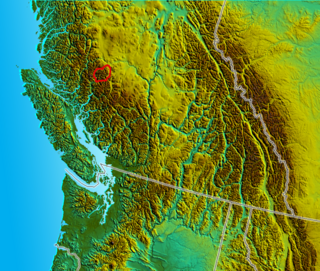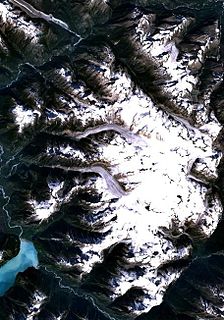Waddington Canyon is a canyon on the Homathko River in the heart of the Pacific Ranges of the Coast Mountains in British Columbia, Canada, located below the confluence of Mosley Creek.

A canyon or gorge is a deep cleft between escarpments or cliffs resulting from weathering and the erosive activity of a river over geologic timescales. Rivers have a natural tendency to cut through underlying surfaces, eventually wearing away rock layers as sediments are removed downstream. A river bed will gradually reach a baseline elevation, which is the same elevation as the body of water into which the river drains. The processes of weathering and erosion will form canyons when the river's headwaters and estuary are at significantly different elevations, particularly through regions where softer rock layers are intermingled with harder layers more resistant to weathering.

The Homathko River is one of the major rivers of the southern Coast Mountains of the Canadian province of British Columbia. It is one of the few rivers that penetrates the range from the interior Chilcotin Country to the coastal inlets of the Pacific Ocean. The Homathko River reaches the sea at the head of Bute Inlet adjacent to the mouth of the Southgate River, just to its east.

The Pacific Ranges are the southernmost subdivision of the Coast Mountains portion of the Pacific Cordillera. Located entirely within British Columbia, Canada, they run northwest from the lower stretches of the Fraser River to Bella Coola and Burke Channel, north of which are the Kitimat Ranges. The Coast Mountains lie between the Interior Plateau and the Coast of British Columbia.
The canyon was named for Alfred Waddington, a gold rush-era entrepreneur who sought to build a road by this route to the Cariboo goldfields from the head of Bute Inlet, which is the outflow of the Homathko River. Opposition to the project and the abusiveness of the project's foreman led to the Chilcotin War of 1864. The location of the killings that touched off the war is in the depths of the canyon at a location marked on maps as Murderers' Bar.
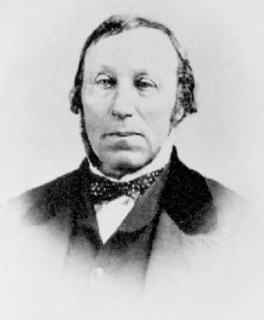
Alfred Penderell Waddington, during his later years, was actively involved in the Colony of Vancouver Island in what later became the province of British Columbia, Canada.

A Gold Rush is a new discovery of gold—sometimes accompanied by other precious metals and rare earth minerals—that brings an onrush of miners seeking their fortune. Major gold rushes took place in the 19th century in Australia, New Zealand, Brazil, Canada, South Africa and the United States, while smaller gold rushes took place elsewhere.
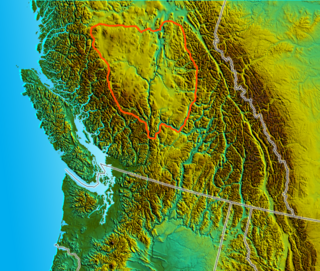
The Cariboo is an intermontane region of British Columbia along a plateau stretching from the Fraser Canyon to the Cariboo Mountains. The name is a reference to the caribou that were once abundant in the region. The Cariboo was the first region of the Interior north of the lower Fraser and its canyon to be settled by non-indigenous people, and played an important part in the early history of the colony and province. The boundaries of the Cariboo proper in its historical sense are debatable, but its original meaning was the region north of the forks of the Quesnel River and the low mountainous basins between the mouth of that river on the Fraser at the city of Quesnel and the northward end of the Cariboo Mountains - an area that is mostly in the Quesnel Highland and focused on several now-famous gold-bearing creeks near the head of the Willow River, the richest of them all, Williams Creek, the location of Barkerville, which was the capital of the Cariboo Gold Rush and also of government officialdom for decades afterwards. This area, the Cariboo goldfields, is underpopulated today but was once the most settled and most powerful of the regions of the province's Interior. As settlement spread southwards of this area, flanking the route of the Cariboo Road and spreading out through the rolling plateaus and benchlands of the Cariboo Plateau and lands adjoining it along the Fraser and Thompson, the meaning changed to include a wider area than the goldfields.
Waddington Canyon has been proposed as the site of one of the dams of a hydroelectric development involving a number of lakes and rivers in the region, including Tatlayoko, Chilko and Taseko Lakes, as well as Mosley Creek and the Homathko and Southgate Rivers

Tatlayoko Lake is a lake on the Homathko River in the western Chilcotin District of the Central Interior of British Columbia, Canada, located on a north-south axis just upstream of the entrance of the series of canyons of the Homathko, including the Great Canyon of the Homathko, on its route to the sea at the head of Bute Inlet. The community of Tatlayoko Lake, British Columbia is located at its northern end.
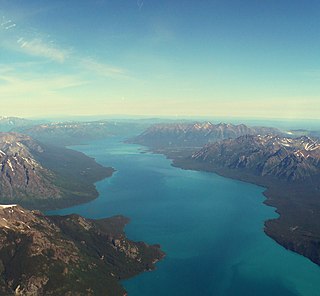
Chilko Lake is a 180 km² lake in west-central British Columbia, at the head of the Chilko River on the Chilcotin Plateau. The lake is about 65 km long, with a southwest arm 10 km long. It is one of the largest lakes by volume in the province because of its great depth, and the largest above 1,000 m in elevation. It and Harrison Lake are the largest lakes in the southern Coast Mountains.

The Taseko Lakes are a pair of lakes, Upper Taseko Lake and Lower Taseko Lake, which are expansions of the upper Taseko River in the southern Chilcotin District of the Central Interior of British Columbia, Canada. Their name is based on the original in the Chilcotin language, Dasiqox Biny, where "Desiqox" means "Mosquito River" and is cognate to the name of the river as in English; the Chilcotin name refers to both lakes as one lake, which was also originally the case with the English usage until official designation of the separate lakes in 1954. The lakes are separated by the short Taseko Narrows, the name of which in Chilcotin is nanats'akash, and is an important crossing place for deer. The Tchaikazan River flows the area between the upper & lower lake from the southwest, while the Taseko River feeds it from the southeast, while the equally large Lord River joins it from the south, at the head of the lake.



